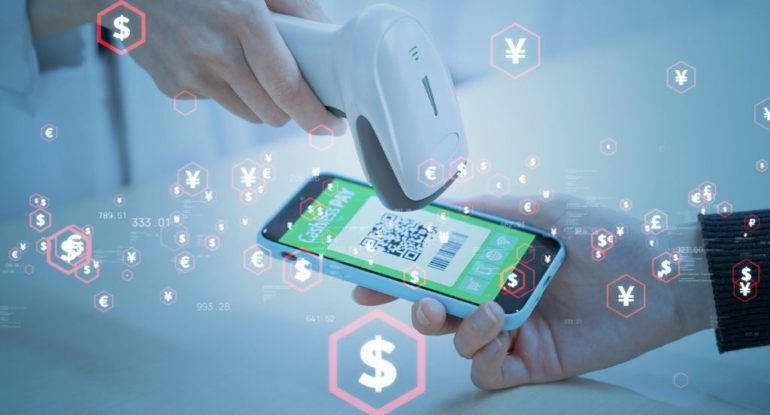Top 10 Amazing Ways Metaverse Can Revolutionize Retail Through Expansive Commercial Strategies

The concept of the metaverse, once relegated to the realms of science fiction and speculative futurism, has transcended the boundaries of imagination to become a tangible and rapidly evolving digital reality. Fueled by the convergence of groundbreaking technologies like blockchain, Non-Fungible Tokens (NFTs), and virtual reality (VR), the metaverse has emerged as a transformative force that is reshaping the landscape of commerce and human interaction. It represents not only a new frontier but a golden opportunity for retailers to reinvent and revolutionize the very essence of how they conduct business.
In this article, we embark on a journey into the metaverse, a virtual and interconnected digital universe where the boundaries between the physical and the digital blur into oblivion. Here, the rules of engagement are rewritten, and the canvas of innovation stretches beyond what was once conceivable. We delve deep into the heart of this digital realm to explore how the retail industry can embrace an expansive commercial strategy within the metaverse, unlocking its vast potential and ushering in a new era of retail that transcends geographical constraints, defies traditional limitations, and redefines the very essence of the shopping experience.
As we navigate the metaverse’s uncharted territories, we will unravel the strategies and tactics that can empower retailers to thrive in this brave new world. From virtual storefronts that push the boundaries of creativity to digital avatars that embody personalization at its zenith, from blockchain-powered supply chains that ensure transparency and authenticity to metaverse marketplaces that broaden horizons, we will explore the tools and concepts that are reshaping the retail landscape.
However, it is essential to tread cautiously in this uncharted digital terrain, for with the promise of boundless opportunities also come challenges and considerations that demand thoughtful navigation. From technical barriers that require expertise to security and privacy concerns that demand vigilance, and from regulatory intricacies to the ever-escalating competition, we will also shine a light on the obstacles that retailers must overcome to thrive in the metaverse.
The metaverse beckons, inviting retailers to embark on a transformative journey that promises to reshape commerce as we know it. It is a realm where innovation knows no bounds, and where the fusion of the physical and digital realms gives rise to unprecedented possibilities. Join us as we embark on this exploration of the metaverse and discover how retail can seize the moment, revolutionize its strategies, and embark on a new era of commerce.
To revolutionize retail in the metaverse, consider these key strategies:
![]()
- Virtual Storefronts:Virtual storefronts in the metaverse mimic physical retail spaces, but with limitless creative possibilities. Retailers can design interactive 3D stores where customers navigate through immersive environments, browse products, and make purchases using virtual currencies or cryptocurrencies.
- Digital Avatars and Personalization:Customizable digital avatars allow shoppers to represent themselves in the metaverse. Retailers can leverage AI and data analytics to personalize the shopping experience, making product recommendations based on users’ preferences and behaviors.
- Virtual Try-On and Fitting Rooms:Augmented reality (AR) and virtual reality (VR) technologies enable virtual try-ons of clothing and accessories. Shoppers can visualize how products look and fit, enhancing confidence in their purchasing decisions.
- NFT-Based Collectibles:Retailers can create limited-edition NFT collectibles tied to their brands. These digital assets can serve as exclusive merchandise, unlocking unique in-game experiences or rewards in the metaverse.
- Blockchain-Powered Supply Chain:Implementing blockchain in the supply chain enhances transparency and traceability. Customers can verify the authenticity and origin of products, reducing the risk of counterfeit goods.
- Metaverse Marketplaces:Online marketplaces within the metaverse allow retailers to showcase their products alongside virtual art, real estate, and digital goods. Integrating with these marketplaces widens a retailer’s reach.
- Virtual Events and Pop-Ups:Hosting virtual events and pop-up shops in the metaverse can generate buzz and attract a diverse audience. These events can include product launches, fashion shows, or live concerts.
- Digital Payments and Cryptocurrencies:Embrace digital payments and cryptocurrencies for transactions within the metaverse. These secure and borderless payment methods cater to a global customer base.
- Engage with Metaverse Communities:Join or create communities within the metaverse related to your retail niche. Engage with users, understand their needs, and build brand loyalty.
- Educational Experiences:Offer educational experiences within the metaverse. For example, a cosmetic brand can provide makeup tutorials in virtual beauty salons.
Also, read – Youth fashion retail chain Pacsun will adopt payments in cryptocurrencies
Challenges and Considerations

Certainly, the metaverse is an exciting frontier for retail, but like any transformative technology, it comes with a set of challenges and considerations that retailers must navigate. Here, we delve into some of the key challenges and considerations when venturing into the metaverse:
- Technical Barriers:Developing a presence in the metaverse requires a deep understanding of virtual reality (VR), augmented reality (AR), blockchain technology, and NFTs (Non-Fungible Tokens). Retailers must invest in the skills and expertise needed to create immersive virtual experiences. This can be a barrier for smaller businesses with limited technical resources.
- Security and Privacy:Security is a paramount concern in the metaverse. Retailers need to safeguard both customer data and virtual assets. Virtual theft, hacking, and fraud are potential risks. Robust encryption, authentication, and cybersecurity measures are essential to protect against these threats.
- Regulatory Compliance:The regulatory landscape for digital assets, NFTs, and cryptocurrencies is evolving rapidly. Retailers operating in the metaverse must stay informed about and compliant with relevant regulations. Failure to do so can result in legal complications and financial penalties.
- Content Moderation:Just like in the real world, the metaverse can have issues with inappropriate content or behavior. Retailers must implement effective content moderation systems to ensure a safe and welcoming environment for users, especially if their metaverse presence is interactive and community-driven.
- Market Competition:As more retailers recognize the potential of the metaverse, competition within virtual spaces intensifies. Standing out becomes challenging, and retailers must differentiate their offerings and provide unique value to attract and retain customers.
- User Experience:Crafting a seamless and enjoyable user experience in the metaverse is critical. Users should be able to navigate virtual stores, try on products, and make purchases effortlessly. Poorly designed or cumbersome interfaces can deter potential customers.
- Scalability:As a retailer’s metaverse presence grows, scalability becomes a concern. Ensuring that the infrastructure can handle increasing user traffic and demand is essential to prevent crashes or performance issues.
- Integration with Physical Retail:For retailers with physical stores, integrating the metaverse with the traditional retail experience can be a complex task. Creating a unified omni-channel strategy that seamlessly connects online and offline shopping experiences is crucial.
- Customer Education:Many consumers may be unfamiliar with the metaverse or skeptical of virtual shopping. Retailers need to invest in educating their customer base about the benefits and safety of metaverse shopping to build trust and adoption.
- Economic Models:The metaverse introduces new economic models, such as virtual currencies and digital assets. Retailers must understand these models and how they apply to their business. This includes considerations of tokenomics, virtual economies, and the potential volatility of virtual currencies.
- Cultural Sensitivity:Operating in a global metaverse means interacting with users from diverse cultures and backgrounds. Retailers must be culturally sensitive in their marketing and content to avoid inadvertently causing offense or misunderstanding.
- Sustainability:The environmental impact of the metaverse, especially in energy consumption for virtual worlds and blockchain transactions, is a growing concern. Retailers should consider sustainable practices and be aware of the carbon footprint of their metaverse activities.
The metaverse offers unprecedented opportunities for retail, it also presents a complex landscape of challenges. Successful navigation of these challenges requires a combination of technical proficiency, security measures, compliance awareness, market differentiation, user-centric design, and cultural sensitivity. By addressing these challenges thoughtfully, retailers can harness the potential of the metaverse and create innovative, immersive shopping experiences for their customers.
.@VANS_66 is skating into the metaverse for the ultimate partnership with @Roblox, bringing users everywhere an interactive skateboard experience where they can deck out their own Vans shoes and board. 🛹 Read more in @USATODAY: https://t.co/HbVpcnjxRw
— The Hatch Agency (@TheHatchAgency) September 2, 2021
Conclusion
The metaverse offers a groundbreaking opportunity for retailers to transcend physical limitations and create immersive shopping experiences. By embracing expansive commercial strategies in the metaverse, retailers can reach a global audience, personalize shopping experiences, and offer innovative products and services. While challenges exist, the rewards of revolutionizing retail in the metaverse are substantial. As the metaverse continues to evolve, early adopters stand to gain a competitive advantage and shape the future of retail.



























































